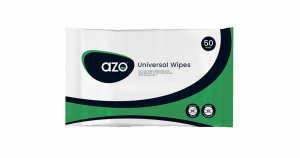Infection control: deeper than surface knowledge
UncategorisedPosted by: Dental Design 19th November 2020

With infection control firmly in the spotlight at the moment, it makes sense to ensure that everyone in your practice understands the importance of cleaning surfaces properly and why this is so vital in the fight to stop the spread of pathogens.
Surfaces are a hotspot for disease transmission, but did you know that the type of surface can greatly determine how long viruses and bacteria survive? It’s not as simple as just spritzing a surface and wiping it clean, and to properly combat pathogens, professionals need to be armed with knowledge as well as effective cleaning products and routines.
Surface transmission
Think of it this way – every surface in your practice has the potential to harbour pathogens. As individuals carrying illnesses expel respiratory droplets through coughing and sneezing, viruses and bacteria are expelled into the air, surviving in a haze until eventually settling onto surfaces. Once here, it’s very easy for people to touch these same surfaces and transfer the pathogens onto their hands. Then it’s only a matter of time before these germs find their way to the face and the mouth – especially if you consider that the average person touches their face at least sixteen times an hour.[i]
We also need to remember that the germs may already be on the infected person’s hands and then transferred to surfaces that way. Hotspots in a dental practice include anywhere that people routinely touch throughout a normal day. For example, door handles are likely to be a big culprit, but you must also consider areas that people sit in for a long time – not only the seats of waiting rooms but any desks for staff as well. In fact, one survey that looked into the most common bacteria hotspots in workplaces found that the average desk in a workplace harbours up to 400 times more bacteria than a toilet seat.[ii]
Other areas that need special attention include light switches, push buttons on dental chairs, computer keyboards and countertops – all of these have been identified as some of the most common spots for disease transmission and therefore should be properly cleaned at regular intervals.[iii]
The type of surface also has a big impact on whether it will be a danger zone in terms of disease transmission. Viruses and bacteria survive different lengths of time when on different surfaces, and this means that certain areas of your practice are more likely to become transmission hotspots. For example, the virus behind the COVID-19 pandemic has been found to survive on stainless steel for up to 72 hours, cardboard for 24 hours and copper for 4 hours and still remain contagious.[iv] This is because these surfaces interact with the moisture supporting the virus’ lifespan in different ways.
This is vital information to bear in mind when protecting your practice, especially as it may mean that some areas will need more regular attention than others.
Back to basics
 In light of the different challenges that surface cleaning creates, it’s necessary to ensure that every member of your team is fully equipped with the knowledge and products necessary to ensure a deep clean every time.
In light of the different challenges that surface cleaning creates, it’s necessary to ensure that every member of your team is fully equipped with the knowledge and products necessary to ensure a deep clean every time.
Industry and government guidelines need to be followed to the letter, and cleaning products used should be able to eliminate the majority of bacteria, viruses, fungi and other pathogens responsible for the spread of illness.
Eschmann has multiple products available that help ensure an excellent standard of infection control. The AzoMax Universal wipes are a quick, effective way to eliminate 99.9999% of pathogens with an alcohol-free formula that is safe to use on the majority of surfaces as well as delicate, non-invasive equipment. Furthermore, the AIRGENE CE Airborne Disinfectant is an all-encompassing solution that cleanses even the hardest to reach spots in your practice using innovative airborne dispersal technology.
Safety first
Viruses and bacteria are complex organisms that require utmost attention when practising infection control. Proper surface decontamination is a guaranteed way to help prevent the spread of disease within practice, and by using efficient and powerful products as well as arming your team with the knowledge about viruses and bacteria they need, you can ensure your practice remains a safe space for patients and staff alike.
For more information on the highly effective and affordable range of decontamination equipment and products from Eschmann, please visit www.eschmann.co.uk or call 01903 875787
[i] Healthline. You probably Touch Your Face Sixteen Times An Hour: Here’s how To Stop. Link: https://www.healthline.com/health-news/how-to-not-touch-your-face [Last accessed September 20].
[ii] Total jobs. Workplace Hygiene: 6 Office Germ Hotspots. Link: https://www.totaljobs.com/insidejob/workplace-hygiene-6-office-germ-hotspots/ [Last accessed September 20].
[iii] Dentistry Today. Best Practices for Stopping the Spread of Infections in Dental Settings. Link: https://www.dentistrytoday.com/news/todays-dental-news/item/2564-best-practices-for-stopping-the-spread-of-infections-in-dental-settings#:~:text=In%20another%20study%2C%20researchers%20recovered,span%20of%20a%20single%20day.&text=Researchers%20have%20found%20that%20other,%2C%20office%20phones%2C%20and%20countertops. [Last accessed September 20].
[iv] Insider. How Long Viruses Live On Surfaces Like plastic, Stainless Steel, Fabric and More. Link: https://www.insider.com/how-long-do-viruses-live-on-surfaces [Last accessed September 20].
No Comments
No comments yet.
Sorry, the comment form is closed at this time.



